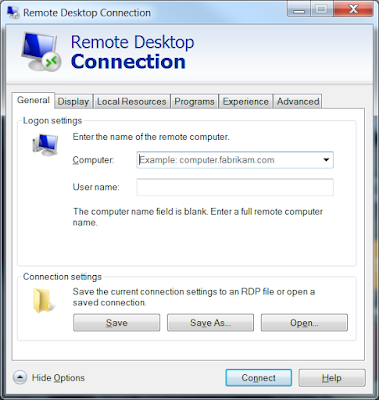

- REMOTE DESKTOP CLIENT WINDOWS 7 HOME PREMIUM UPGRADE
- REMOTE DESKTOP CLIENT WINDOWS 7 HOME PREMIUM FULL
- REMOTE DESKTOP CLIENT WINDOWS 7 HOME PREMIUM OFFLINE
Windows 7 Professional - the equivalent of Windows Vista Business and Windows XP Professionalįeatures: Aero Glass GUI, Aero Background, Aero Peek, Aero Snap, Live Thumbnail previews, Multi Touch capabilities, Home Group, Windows Media Center, DVD playback and authoring, Premium Games, Mobility Center, Domain join, Remote Desktop host, Location Aware printing, EFS, Mobility Center, Presentation Mode, Offline Folders.Ĭut Win 7 key features: BitLocker, BitLocker To Go, AppLocker, Direct Access, Branche Cache, MUI language packs, boot from VHD. Windows 7 Home Premium - the equivalent of Windows Vista Home Premium and of Windows XP Media CenterĪvailability: worldwide via mainstream retail and OEM channels.įeatures: Aero Glass GUI, Aero Background, Aero Peek, Aero Snap, Live Thumbnail previews, Multi Touch capabilities, Home Group, Windows Media Center, DVD playback and authoring, Premium Games, Mobility Center.Ĭut Win 7 key features: Domain join, Remote Desktop host, Advanced Backup, EFS, Offline Folders Windows 7 Home Basic – the equivalent of Windows Vista Basic and Windows XP Home EditionĪvailability: exclusively for emerging markets, only pre-installed on new PCs by an OEM (original equipment manufacturer).Ĭut Win 7 key features: Aero Glass GUI, Live Thumbnail Previews, Internet Connection Sharing, Windows Media Center, but the edition is not as limited as the Starter SKU. Windows 7 Starter – the equivalent of Windows Vista Starter and Windows XP Starter editionsĪvailability: worldwide, only pre-installed on new PCs by an OEM (original equipment manufacturer).įeatures: the Superbar (evolved taskbar), Jump Lists, Windows Media Player, Backup and Restore capabilities, Action Center, Device Stage, Play To, Fax and Scan, Games.Ĭut Win 7 key features: Aero Glass GUI along with instances of the Aero desktop evolution, Touch capabilities, Windows Media Center, Live Thumbnail previews, Home Group, users are limited to running only three concurrent applications. The third change lies in how we broadly communicate in the marketplace, to make these choices as simple and clear as possible for customers and partners,” Ybarra added. This way, customers can enable the scenarios they want across the broad hardware choices they have.
REMOTE DESKTOP CLIENT WINDOWS 7 HOME PREMIUM FULL
“The second change is that we have designed Windows 7 so different editions of Windows 7 can run on a very broad set of hardware, from small-notebook PCs (sometimes referred to as netbooks) to full gaming desktops. (via Paul Thurrott, including the feature enumeration below) Bill Veghte, senior vice president for the Windows Business, revealed that the lineup of Windows 7 editions was designed to offer simplification for consumers while working to satisfy the needs specific to market niches. At the same time, the SKUs offered along with the core editions are now aimed at specific market segments, truly simplifying choice for consumers. Still, it is very important to understand that Microsoft will focus on Windows 7 Home Premium and Windows 7 Professional, rather than pushing all editions on the market. Moving from Starter to Ultimate, each edition will supersede the previous, containing all of its features and additional components on top. When it comes down to the editions of Windows 7, the relationship between SKUs, in terms of the model, can be defined best by the Russian matriosca dolls. With Windows 7 there is a more natural progression from one edition to the next,” revealed Mike Ybarra, general manager for Windows.


Customers won’t have to face that trade-off with Windows 7. As an example, some business customers using Windows Vista Business wanted the Media Center functionality that is in Windows Vista Home Premium but didn’t receive it in Business edition.
REMOTE DESKTOP CLIENT WINDOWS 7 HOME PREMIUM UPGRADE
That is to say, as customers upgrade from one version to the next, they keep all features and functionality from the previous edition. “The first change in Windows 7 was to make sure that editions of Windows 7 are a superset of one another. Windows 7 Starter, Home Basic, Home Premium, Professional, Enterprise and Ultimate, along with the N variants for the European market, represent a simplification over the Vistas that hit the shelves at the end of January 2007, although they might not appear so at first. The next iteration of the Windows client will come to the table in no less than six flavors, but possibly as much as eight, with Microsoft planning to focus on just two of the editions.

The Windows 7 SKUs (Stock Keeping Units) are out from behind the translucent barrier set in place by Steven Sinofsky, senior vice president, Windows and Windows Live Engineering Group, and out in the open.


 0 kommentar(er)
0 kommentar(er)
